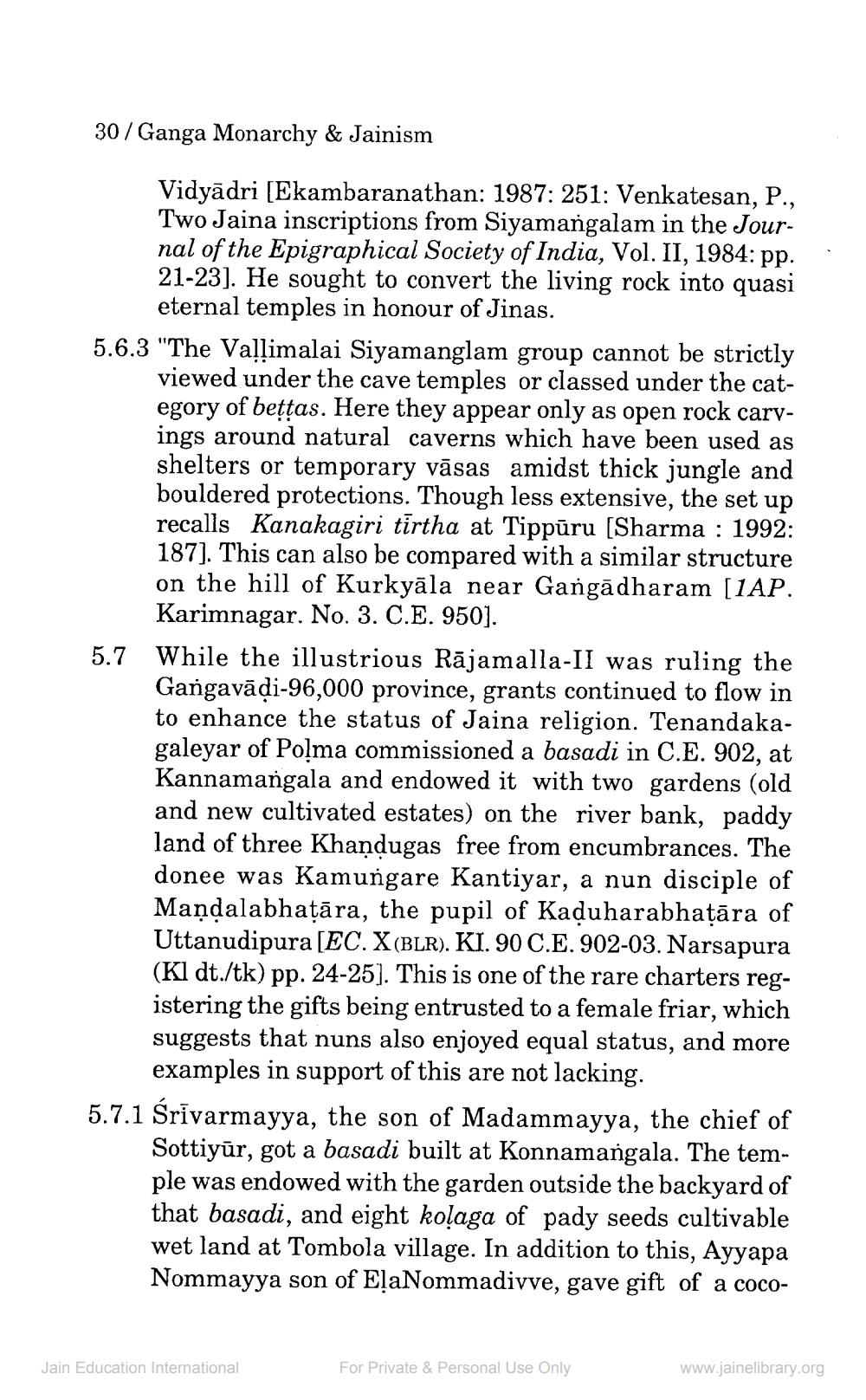________________
30/Ganga Monarchy & Jainism
Vidyadri [Ekambaranathan: 1987: 251: Venkatesan, P., Two Jaina inscriptions from Siyamangalam in the Journal of the Epigraphical Society of India, Vol. II, 1984: pp. 21-23]. He sought to convert the living rock into quasi eternal temples in honour of Jinas.
5.6.3 "The Vallimalai Siyamanglam group cannot be strictly viewed under the cave temples or classed under the category of beṭṭas. Here they appear only as open rock carvings around natural caverns which have been used as shelters or temporary vāsas amidst thick jungle and bouldered protections. Though less extensive, the set up recalls Kanakagiri tirtha at Tippūru [Sharma: 1992: 187]. This can also be compared with a similar structure on the hill of Kurkyāla near Gangadharam [1AP. Karimnagar. No. 3. C.E. 950].
5.7 While the illustrious Rajamalla-II was ruling the Gangavāḍi-96,000 province, grants continued to flow in to enhance the status of Jaina religion. Tenandakagaleyar of Polma commissioned a basadi in C.E. 902, at Kannamangala and endowed it with two gardens (old and new cultivated estates) on the river bank, paddy land of three Khandugas free from encumbrances. The donee was Kamungare Kantiyar, a nun disciple of Mandalabhaṭāra, the pupil of Kaḍuharabhaṭāra of Uttanudipura [EC. X (BLR). KI. 90 C.E. 902-03. Narsapura (Kl dt./tk) pp. 24-25]. This is one of the rare charters registering the gifts being entrusted to a female friar, which suggests that nuns also enjoyed equal status, and more examples in support of this are not lacking.
5.7.1 Śrīvarmayya, the son of Madammayya, the chief of Sottiyur, got a basadi built at Konnamangala. The temple was endowed with the garden outside the backyard of that basadi, and eight kolaga of pady seeds cultivable wet land at Tombola village. In addition to this, Ayyapa Nommayya son of ElaNommadivve, gave gift of a coco
Jain Education International
For Private & Personal Use Only
www.jainelibrary.org




